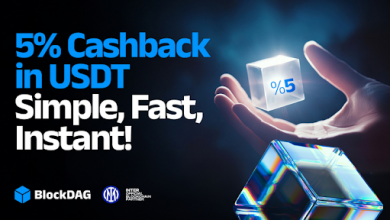Credit and Microloans for In-Game Purchases: Financing Fun Responsibly

From the humble beginnings of pixelated arcade games to the advent of hyper-realistic virtual environments, gaming has transformed into a multi-billion-dollar industry. This transformation has not only enhanced the quality of entertainment but also reshaped the way players interact with games, including how they invest in their experiences through in-game purchases. From traditional arcade machines to fully immersive virtual realities, gaming has become a major part of our digital lives. One trend that has grown alongside this evolution is the monetization of games through in-game purchases.
Understanding In-Game Purchases
In-game purchases are items, upgrades, or currencies that players can buy to enhance their gaming experience. These transactions can range from a few cents to hundreds of dollars, depending on the game and the items available.
Types of In-Game Purchases
- Cosmetic Items: Skins, avatars, or other visual enhancements.
- Functional Upgrades: Tools or weapons that provide a competitive edge.
- Subscription Services: Monthly passes or premium memberships.
- Loot Boxes: Mystery packages containing random items.
With these categories, players often feel tempted to spend more than they initially planned. As a result, financing mechanisms have emerged to cater to gamers who wish to enjoy these enhancements without immediate financial strain.
The Rise of Credit for Gaming
Credit systems designed for gaming are relatively new but rapidly gaining popularity. These systems allow players to access in-game purchases without upfront payments. By spreading costs over time, they make expensive items more accessible.
Benefits of Credit for In-Game Purchases
- Immediate Access: Players can enjoy premium content without waiting.
- Manageable Payments: Costs are spread over weeks or months, easing the financial burden.
- Reward Programs: Some gaming credit systems offer loyalty rewards, enticing more users.
Despite these benefits, there are risks involved. High interest rates and the temptation to overspend can lead to financial challenges if not managed responsibly.
Microloans: A New Frontier in Gaming
Microloans are small, short-term loans that provide quick financial support. While traditionally associated with entrepreneurship, they have found a niche in gaming. Players can apply for microloans to fund in-game purchases, paying them back over a set period.
Why Microloans Are Appealing
- Speed: Approvals are often instant.
- Flexibility: Loan amounts are tailored to specific needs.
- Convenience: Many platforms integrate seamlessly with gaming systems.
However, microloans also carry risks. Interest rates can be high, and repayment terms strict. Players must weigh the convenience against the potential costs.
The Ethical Considerations
The intersection of credit, microloans, and gaming raises important ethical questions. Developers and lenders must prioritize the financial well-being of players to avoid exploiting their desires.
Potential Issues
- Addiction Concerns: Easy credit may fuel compulsive spending.
- Transparency: Hidden fees and unclear terms can trap players in debt.
- Targeting Vulnerable Groups: Younger players or those with limited financial literacy may be disproportionately affected.
Developers and financial institutions have a shared responsibility to ensure these systems are transparent and fair. Offering clear terms and promoting financial literacy within the gaming community can help mitigate risks.
Tips for Responsible Financing
For players considering credit or microloans for in-game purchases, responsible use is essential. Missteps can lead to various pitfalls, such as accumulating high-interest debt from frequent purchases or struggling with repayment due to unclear loan terms. For instance, a gamer might take a microloan for a limited-time offer but end up paying double the original amount due to hidden fees. Conversely, there are success stories where players have managed their finances wisely, using credit to enhance their gaming experiences without overspending. Such balanced approaches highlight the importance of being informed and vigilant when exploring these financial tools. Here are some practical tips to avoid financial pitfalls:
- Set a Budget: Define a monthly gaming allowance and stick to it.
- Understand Terms: Read the fine print before committing to any loan or credit system.
- Avoid Impulse Spending: Take time to evaluate whether a purchase is worth it.
- Monitor Expenses: Regularly review gaming expenses to avoid overspending.
- Seek Alternatives: Consider earning in-game currency through gameplay instead of purchasing it outright.
The Future of Financing in Gaming
As the gaming industry continues to grow, the integration of financial tools will likely expand. Innovations such as subscription-based credit plans or blockchain-based microloans may emerge, offering players even more options. However, the need for responsible practices will remain crucial.
Key Trends to Watch
- AI-Powered Credit Assessment: Personalized loan offers based on gaming habits.
- Blockchain Integration: Transparent and secure transactions.
- Enhanced Financial Education: Tools and resources to teach players about responsible spending.
By staying informed and making smart decisions, players can enjoy their favorite games without jeopardizing their financial health.
Conclusion
Credit and microloans for in-game purchases represent a unique intersection of finance and entertainment. While they offer exciting opportunities to enhance gaming experiences, they come with responsibilities. By understanding the risks, setting boundaries, and staying informed, players can make the most of these options without falling into financial traps. Developers and lenders must also play their part by promoting ethical practices and ensuring transparency. With a balanced approach, gaming can remain a source of joy and excitement without compromising financial well-being.





